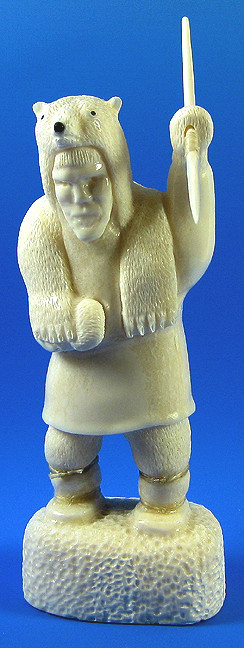Ancient ivory is found on St. Lawrence Island and the shores of the Bering Sea in Alaska and meets all federal laws. Ancient or “fossil” ivory is at least 500 years old. Each piece of ivory is unique; the patterns and colors are contingent on the minerals the ivory absorbed while lying in the ground. Both Natives and non-Natives can carve it.
Walrus ivory has three layers just like human teeth: an outer (enamel), middle (dentine), and inner core. A talented Native artist will use all three layers in a carving, making unusual patterns on the carving and making it one of a kind. It will sometimes have thin black lines resulting from abrupt changes in temperature, and are natural and acceptable in the art work. The “breathing cracks” as they are called, result from abrupt changes in temperature when the walrus moves from warm rock haulouts to the cold sea water. New Walrus ivory can only be carved by an Alaska Native. The resulting sculptures can be bought, sold and transported by anyone. The Eskimo people only hunt for food, then use the by-products for clothing, shelter and art. Harvesting of new ivory is carefully watched by the Fish & Wildlife Service.
With proper care, your ivory piece will last a lifetime:
DO NOT clean with detergents or furniture polish.*
DO NOT submerge in water.*
Keep out of direct sunlight & away from heaters.
Abrupt changes in temperature or humidity may result in cracks.
Keep a small container of water nearby for humidity.
*All you need is a soft, dry rag for dusting.

